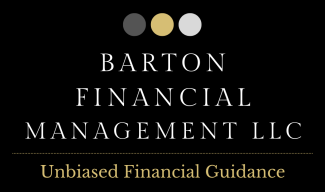As you begin getting serious about retiring from federal service, you may be concerned that you’ll miss some critical steps in the preparation process. Follow these 10 must-do action items to ensure you’re on track to living the retirement you’ve imagined.
1. Update your beneficiary designations, wills and estate planning documents.
Federal employees have several beneficiary designations to make on various government benefits that they have (like lump sum benefits payable from CSRS or FERS, Federal Employees Group Life Insurance (FEGLI) and the Thrift Savings Plan (TSP). Allowing the default options to go into effect is dangerous – and unnecessary.
2. Get crystal clear on your federal service history to maximize the pension available to you.
Employees should be their own best advocate to ensure that their agency’s record of their service is correct and that the employee understands how certain pieces of service they have had throughout their career may affect the ultimate pension they receive once they retire from federal service. Military service, part-time service, temporary time and periods of service which were refunded to the employee upon a break-in-service – if not properly handled – can leave the retiree receiving significantly less in their pension.
To get clear on your federal service history, start by certifying your federal service. Despite the pushback you may receive from HR, you are entitled to submit this at any time during your federal career. Do not wait until you retire.
3. Understand the real impact that taxes will have on your finances in retirement.
Taxes can be the carbon-monoxide of a financial plan. If not properly planned for, taxes can be the silent killer to the grand visions that many have in retirement. Having proper tax awareness – coupled with tax planning strategies – will help you to feel prepared and confident that you know precisely how your income will be taxed once you step into this phase of your life.
Proactive planning is key. Wait too long and you will lose the opportunity to make meaningful changes to put you in the best tax position possible for retirement.
4. Seek to get the best of both worlds – government benefits and private sector solutions.
When federal retirees are approaching their retirement from federal service, they are primarily concerned about running out of money and protecting assets for their beneficiaries. Although some government benefits are available to keep in retirement, many don’t stack up for the long haul when compared to private sector alternatives.
It is important to remember that the government does not have a monopoly on good ideas, so you should seek solutions that are tailored specifically for your situation. Often, we end up with a combination of government benefits and private products – each having different features to complement one another.
5. Take advantage of legitimate retirement training opportunities available.
The federal government mandates that pre-retirement training be made available to employees when they are within the 5-year window of being eligible to retire. Request a Personalized Benefit report that is completely free.
6. Evaluate programs based on merit – not blind loyalty.
Blind loyalty is dangerous. No employer-sponsored plan is perfect – including the government’s plan. The Office of Personnel Management does not scour the market for perfect programs for the millions of federal employees and retirees on the books. When evaluating your many benefits decisions, don’t be loyal to government programs that don’t serve your family properly into retirement.
Although certain benefits have served you well while you have been employed, that does not necessarily mean they will work the same in retirement. You must be able to properly – and without bias – evaluate your options based on the merit of what the program does for you in the future.
7. Have a properly funded emergency fund for the transition into retirement.
While we hope for a smooth financial transition into retirement, it can be a choppy ride for many. Having cash in the bank allows for a less stressful segue into the next stage of life. OPM often takes up to a year to have your retirement check stabilized, so having a properly funded emergency fund can be the difference between calm and chaos.
8. Have uncomfortable conversations about life insurance and long-term care planning.
There are some tough conversations to have when it comes to financial planning. Topics such as life insurance and long-term care planning, can be emotionally taxing causing many to avoid the conversation altogether. If you do not have a plan in place for your family’s income needs when you die, or how to pay for long term care services should you need them while you are living, you are doing yourself and your family a huge disservice.
Meeting with a financial professional who understands the options available within your government benefits, can offer some framework to have the right conversations to ensure the right coverage is in place.
9. Stress-test your retirement plan by pretending to retire.
In order to retire confidently, we must first know what we need. Start by roughing out a retirement budget to ensure you know the very basics that need to be covered. Keep in mind that the cost of many of your government benefits can rise significantly in retirement, and most of your regular household expenses (like your mortgage, car, food, gas, utilities, etc.) don’t decrease just because you have taken a pay cut in retirement.
Be honest with yourself about what this budget will look like – and then try it on for size. By pretending to live on your retirement budget (with a little imagination), you will be able to test drive the financial part to see how prepared you really are for this transition. After all, if you are not quite financially ready to retire, would you rather know now or after you’ve already retired.

